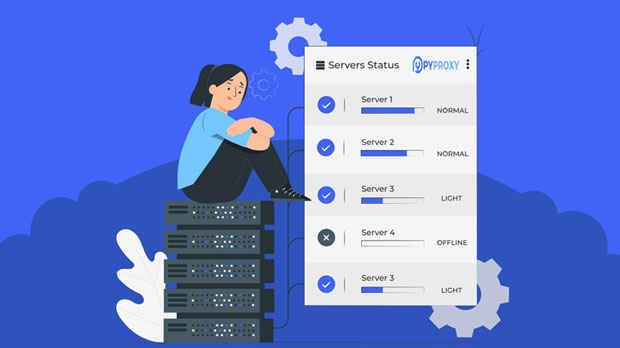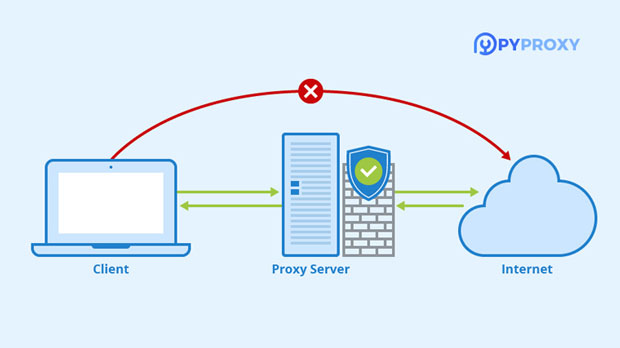When considering proxies, the speed of a proxy server is a critical factor for users seeking efficient online browsing, web scraping, or data gathering. Two popular types of proxies in the market are PYPROXY and Plain Proxy. But which one is faster? This article compares the two, focusing on their structure, speed factors, and overall performance in various real-world use cases. By understanding the strengths and limitations of each, users can make an informed choice based on their specific needs. Introduction to PyProxy and Plain ProxyBefore delving into the speed comparison, it's essential to understand what PyProxy and Plain Proxy are. PyProxy is a proxy system that typically leverages Python libraries to establish connections between a client and the internet. It is commonly used in tasks like web scraping, automation, or browsing with enhanced security. PyProxy often incorporates additional layers of functionality, such as session management, request handling, and even rotating IP addresses to ensure anonymity.On the other hand, Plain Proxy refers to a simple proxy that functions as an intermediary between a client and the target server. It does not include the extra features seen in more advanced proxies like PyProxy. Plain Proxies mainly focus on routing traffic from the client to the destination without the additional enhancements that PyProxy offers.Now, let’s break down their differences and performance characteristics to understand which one is faster in practice.Key Speed Factors in Proxy PerformanceThere are several factors that can influence the speed of any proxy. The most relevant for this comparison are:- Connection Latency: The time taken to establish a connection between the client and the proxy server.- Bandwidth: The amount of data that can be transferred through the proxy at any given time, directly impacting speed.- Request Processing Time: The time it takes for the proxy server to handle and process requests.- Server Load: The number of concurrent users accessing the proxy server, affecting overall performance.- Geographical Proximity: The physical distance between the proxy server and the user can play a role in speed, with closer servers generally providing faster connections.Performance Breakdown: PyProxyPyProxy proxies are often designed for more complex tasks. While they offer a high level of flexibility and advanced features, these enhancements can sometimes impact speed due to the overhead required to manage these functionalities.1. Overhead from Python Libraries: PyProxy relies heavily on Python libraries such as requests, asyncio, or scrapy. These libraries are designed to handle many tasks but can add processing overhead that increases latency. For instance, Python's dynamic nature can result in slightly slower performance compared to more statically compiled languages.2. Request Handling: PyProxy often includes request handling features that manage retries, timeouts, and IP rotation. Although these features add a layer of protection and functionality, they can lead to a slight increase in request processing time.3. Flexibility and Features: While these additional features can benefit users who need automation and anonymity, they require additional resources for processing, which might reduce the overall speed when compared to simpler proxy solutions.4. Proxy Pool and Rotation: In scenarios where PyProxy is used with a proxy pool, rotating IPs can sometimes cause delays in establishing a stable connection, affecting speed.Performance Breakdown: Plain ProxyPlain Proxy servers, by design, prioritize simplicity and efficiency, often resulting in faster speeds compared to more feature-rich systems like PyProxy.1. Minimal Processing: Unlike PyProxy, Plain Proxies focus solely on forwarding requests from the client to the destination server without any additional processing. As a result, they tend to have lower latency and faster speeds due to the lack of overhead from complex features.2. Efficient Data Routing: Plain Proxies are built for high-throughput data transfer with minimal delay. Since they don’t have to manage multiple tasks like IP rotation or automated session handling, they can route data faster, making them ideal for use cases where speed is the primary concern.3. Lower Complexity: The lack of advanced features means that Plain Proxies can handle a higher volume of requests in less time, especially when compared to a system like PyProxy, which manages multiple layers of functionality.Comparing the Two: Speed in Different ScenariosTo determine which proxy is faster, we need to evaluate both under different circumstances.1. Web Scraping: For web scraping tasks, PyProxy’s ability to rotate IPs and manage sessions may be advantageous in terms of evading detection or bypassing rate limits. However, the added features of PyProxy can introduce slight delays in processing requests. In contrast, Plain Proxies might perform faster for bulk scraping tasks, especially when speed is prioritized over anonymity.2. Anonymous Browsing: If the user’s primary goal is to remain anonymous while browsing, PyProxy’s advanced features, such as IP rotation and request handling, are invaluable. While they may result in slightly slower speeds, they offer a higher level of security. Plain Proxies, while faster, do not provide the same level of protection or anonymity.3. General Internet Usage: For basic tasks such as browsing or accessing content with minimal need for anonymity or advanced features, a Plain Proxy is likely the better option. Its simplicity results in faster speeds, as it requires less processing.Which Proxy is Faster?In general, Plain Proxies are faster than PyProxy. Their simplicity and lack of additional processing overhead make them better suited for tasks that require high speed and minimal delay. However, PyProxy’s added features, such as session management and IP rotation, are crucial for tasks where security, anonymity, and reliability are more important than speed. If speed is your only priority, Plain Proxy will likely serve you better. But if your needs extend to automated browsing, web scraping, or accessing geo-restricted content, PyProxy, despite being slightly slower, offers more robust functionality.Both PyProxy and Plain Proxy have their strengths and weaknesses, and the choice between the two depends on the user’s specific needs. For high-speed, low-latency requirements, Plain Proxies outperform PyProxy. However, if the task requires additional features like automation, anonymity, or IP rotation, PyProxy provides more value despite the marginal decrease in speed.In conclusion, understanding the trade-offs between speed and functionality is key to choosing the right proxy for your use case. By carefully assessing the demands of your tasks, you can ensure that you select the most efficient and effective proxy solution for your needs.
Mar 28, 2025
![arrow]()




























































